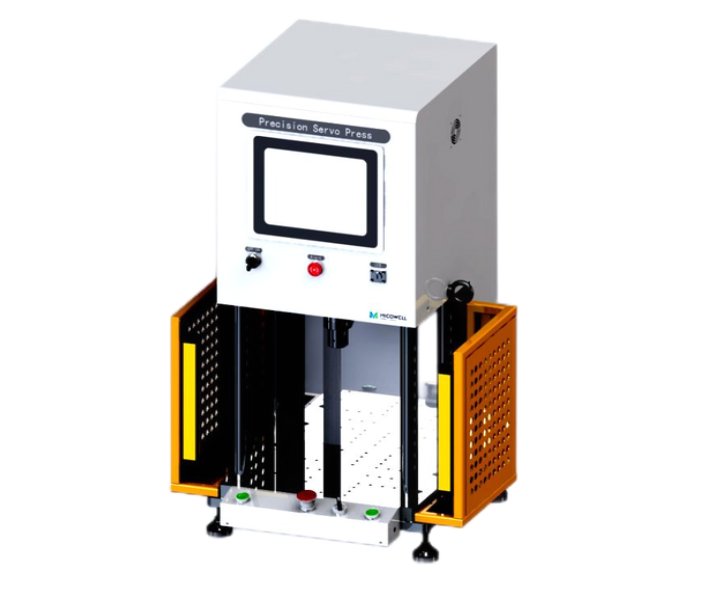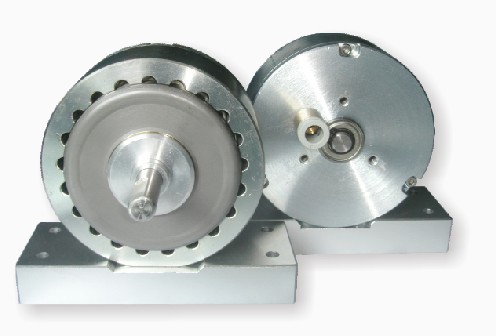Revolutionizing Motor Testing The Power of Hysteresis Technology and Advanced Test Systems
In the rapidly evolving world of industrial automation and electric motor development, precision testing solutions have become the cornerstone of innovation. Among the array of technologies driving this progress, hysteresis-based systems and advanced motor test equipment stand out as critical components for modern engineering challenges. This article explores how hysteresis brakes, dynamometers, clutches, and comprehensive motor test systems are transforming industries ranging from automotive manufacturing to renewable energy production. The Science Behind Hysteresis Technology At the heart of these advanced systems lies the fascinating principle of hysteresis – a phenomenon where the magnetic properties of materials lag behind the changes in external magnetic fields. This unique characteristic forms the basis for three crucial components in modern testing setups: 1. Hysteresis Brakes: These non-contact braking systems utilize electromagnetic forces to create precise, wear-resistant torque control. Unlike traditional friction brakes, hysteresis brakes offer smooth operation without mechanical contact, making them ideal for applications requiring exact speed regulation and minimal maintenance. 2. Hysteresis Dynamometers: Building on the same principles, these devices provide exceptional torque measurement capabilities. Their ability to maintain consistent loads across various speeds makes them particularly valuable in testing electric motors, transmissions, and complete powertrain systems. 3. High-precision force sensors : Offering precise torque transmission without physical contact, these components enable accurate speed synchronization in complex machinery. Their ability to handle rapid cycling and maintain consistent performance under varying temperatures makes them indispensable in automated production lines. The Evolution of Motor Testing Equipment Traditional motor testing methods often struggled to keep pace with the demands of modern electric motor development. Today's motor test systems integrate hysteresis technology with advanced digital controls to create comprehensive testing solutions that address multiple aspects of motor performance: – Dynamic load simulation – Energy efficiency measurements – Thermal performance analysis – Vibration and noise profiling – Long-term durability testing Modern motor dynamometers have evolved into sophisticated measurement instruments that combine hysteresis principles with real-time data acquisition. These systems can simulate real-world operating conditions with unprecedented accuracy, allowing engineers to validate motor performance under exacting circumstances before products reach the market. Integrated Test Solutions for Modern Challenges Contemporary motor test systems bring together various components into cohesive platforms that streamline the testing process. A typical advanced setup might include: 1. Multi-axis torque measurement systems 2. Programmable power supplies and loads 3. High-speed data acquisition modules 4. Customizable control software 5. Safety interlocks and environmental controls These integrated systems enable simultaneous measurement of electrical, mechanical, and thermal parameters, providing a complete picture of motor performance. The integration of hysteresis-based components ensures precise load control while maintaining energy efficiency – particularly important when testing high-power motors common in electric vehicles and industrial applications. Applications Across Industries The versatility of hysteresis-based testing equipment has led to widespread adoption across multiple sectors: Automotive: Electric vehicle manufacturers rely on these systems for testing traction motors, battery cooling systems, and regenerative braking components. The ability to simulate complex drive cycles helps optimize energy consumption and thermal management. Aerospace: From flight control actuators to auxiliary power units, hysteresis dynamometers provide the precision required for certifying aerospace components. Their non-contact operation eliminates contamination risks in cleanroom environments. Renewable Energy: Wind turbine generators and solar tracking systems undergo rigorous testing using hysteresis-based equipment to ensure reliable operation under variable load conditions. The technology's ability to handle high torque at low speeds proves particularly valuable in wind energy applications.  Industrial Automation: Manufacturers of robotic systems and CNC machinery utilize hysteresis clutches and brakes for precise motion control. The maintenance-free operation significantly reduces downtime in continuous production environments. Advantages Over Conventional Systems The shift toward hysteresis-based testing solutions has been driven by several key advantages: Consistency: Magnetic hysteresis provides inherent stability, ensuring repeatable test conditions over thousands of cycles. Durability: Absence of mechanical contact in hysteresis components translates to longer service life and reduced maintenance costs. Precision: Digital control systems paired with hysteresis devices achieve torque accuracy within 0.25% of full scale. Energy Efficiency: Regenerative systems can recover up to 90% of absorbed energy during testing operations. Safety: Non-contact operation minimizes fire risks and eliminates particulate generation in sensitive environments. Overcoming Modern Testing Challenges As motor designs become more complex and efficiency standards more stringent, test systems must address several critical challenges: High-Speed Testing: Modern brushless motors operating at 50,000 RPM or higher require dynamometers with rapid response times. Hysteresis-based systems excel in these applications due to their low inertia and absence of mechanical lag.
Industrial Automation: Manufacturers of robotic systems and CNC machinery utilize hysteresis clutches and brakes for precise motion control. The maintenance-free operation significantly reduces downtime in continuous production environments. Advantages Over Conventional Systems The shift toward hysteresis-based testing solutions has been driven by several key advantages: Consistency: Magnetic hysteresis provides inherent stability, ensuring repeatable test conditions over thousands of cycles. Durability: Absence of mechanical contact in hysteresis components translates to longer service life and reduced maintenance costs. Precision: Digital control systems paired with hysteresis devices achieve torque accuracy within 0.25% of full scale. Energy Efficiency: Regenerative systems can recover up to 90% of absorbed energy during testing operations. Safety: Non-contact operation minimizes fire risks and eliminates particulate generation in sensitive environments. Overcoming Modern Testing Challenges As motor designs become more complex and efficiency standards more stringent, test systems must address several critical challenges: High-Speed Testing: Modern brushless motors operating at 50,000 RPM or higher require dynamometers with rapid response times. Hysteresis-based systems excel in these applications due to their low inertia and absence of mechanical lag.  Thermal Management: Integrated temperature monitoring and adaptive cooling systems help maintain test consistency even during prolonged high-load operations. Cybersecurity: Networked test systems now incorporate robust data encryption and access controls to protect intellectual property during collaborative development projects. Customization Capabilities: Modular system architectures allow users to configure test stands for specific applications, from micro-motors in medical devices to multi-megawatt industrial drives. Future Trends in Motor Testing Technology The continued evolution of hysteresis-based systems points toward several exciting developments: AI-Driven Predictive Testing: Machine learning algorithms analyzing test data to forecast long-term performance characteristics Wireless Power and Data Transmission: Eliminating cable artifacts in high-frequency motor testing Hybrid Systems: Combining hysteresis principles with eddy current and powder brake technologies for expanded operational ranges Sustainable Testing Practices: Enhanced energy recovery systems and eco-friendly cooling solutions As industries push toward higher efficiency standards and more sophisticated motor designs, the role of advanced test equipment becomes increasingly vital. Companies investing in hysteresis-based testing solutions position themselves at the forefront of technological innovation, equipped to develop superior products while reducing time-to-market and testing costs. Implementing Effective Test Strategies To maximize the benefits of modern test systems, organizations should consider: 1. Comprehensive requirement analysis before selecting equipment 2. Proper integration with existing manufacturing execution systems 3. Continuous operator training programs 4. Regular calibration and system validation protocols 5. Data management strategies for handling large test datasets The integration of hysteresis technology into motor test systems represents more than just incremental improvement – it signifies a fundamental shift in how industries approach product development and quality assurance. By providing unmatched precision, reliability, and versatility, these advanced systems are becoming indispensable tools in the global push toward electrification and sustainable industrial practices. As technology continues to advance, the synergy between hysteresis principles and digital innovation promises to unlock new possibilities in motor testing and performance optimization.
Thermal Management: Integrated temperature monitoring and adaptive cooling systems help maintain test consistency even during prolonged high-load operations. Cybersecurity: Networked test systems now incorporate robust data encryption and access controls to protect intellectual property during collaborative development projects. Customization Capabilities: Modular system architectures allow users to configure test stands for specific applications, from micro-motors in medical devices to multi-megawatt industrial drives. Future Trends in Motor Testing Technology The continued evolution of hysteresis-based systems points toward several exciting developments: AI-Driven Predictive Testing: Machine learning algorithms analyzing test data to forecast long-term performance characteristics Wireless Power and Data Transmission: Eliminating cable artifacts in high-frequency motor testing Hybrid Systems: Combining hysteresis principles with eddy current and powder brake technologies for expanded operational ranges Sustainable Testing Practices: Enhanced energy recovery systems and eco-friendly cooling solutions As industries push toward higher efficiency standards and more sophisticated motor designs, the role of advanced test equipment becomes increasingly vital. Companies investing in hysteresis-based testing solutions position themselves at the forefront of technological innovation, equipped to develop superior products while reducing time-to-market and testing costs. Implementing Effective Test Strategies To maximize the benefits of modern test systems, organizations should consider: 1. Comprehensive requirement analysis before selecting equipment 2. Proper integration with existing manufacturing execution systems 3. Continuous operator training programs 4. Regular calibration and system validation protocols 5. Data management strategies for handling large test datasets The integration of hysteresis technology into motor test systems represents more than just incremental improvement – it signifies a fundamental shift in how industries approach product development and quality assurance. By providing unmatched precision, reliability, and versatility, these advanced systems are becoming indispensable tools in the global push toward electrification and sustainable industrial practices. As technology continues to advance, the synergy between hysteresis principles and digital innovation promises to unlock new possibilities in motor testing and performance optimization.